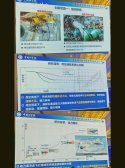triple duct VCE demonstrator developed by the Institute of Engineering Thermophysics, Chinese Academy of Sciences, has completed high-altitude test bench trials. Compared to the baseline engine with afterburner, fuel consumption is reduced by 37.5%, and specific thrust is increased by 47%.
This is just the institute's own test project, not the highly classified project for the sixth-gen fighter.
View attachment 163749
The improved thrust and fuel consumption figures on that slide are noteworthy (and consistent with what you'd expect for a VCE/ACE).
This more or less tracks with some of the papers we've had over recent years indicating they were doing this kind of testing.
I suppose the real question is whether this specific testbed will be the basis of the powerplant for J-36/J-XDS or if a bespoke design will be developed with experience from these testbeds for those new aircraft.
Edit: saw the edits made in the post, which I agree with. Tbf the fact they're showing this testbed itself would be indicative that it's more of a "technology/industry progress" showcase rather than revealing development of a direct subsystem of an important and sensitive project
Oh, and assuming these tests occurred within the last two years at least (I assume they wouldn't reveal relatively fresh off the press development info within the last 12 months), then they aren't too far behind the ground and high altitude testing of XA100/101 (note, the XA102/103 are the subsequent engines under development intended for F-47, while XA100/101 were intended for F-35 but not adopted)




